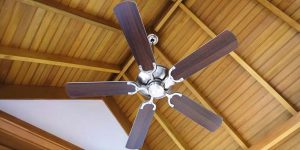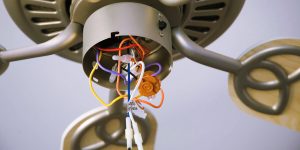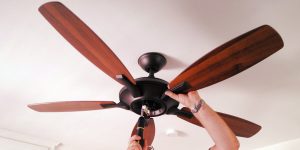Despite their ubiquity, the precise extent of ceiling fan power consumption often remains shrouded in uncertainty. By demystifying the factors that influence their power consumption and examining the potential impact on energy bills, I aim to shed light on how much power a ceiling fan really uses.
Standard power consumption of ceiling fans
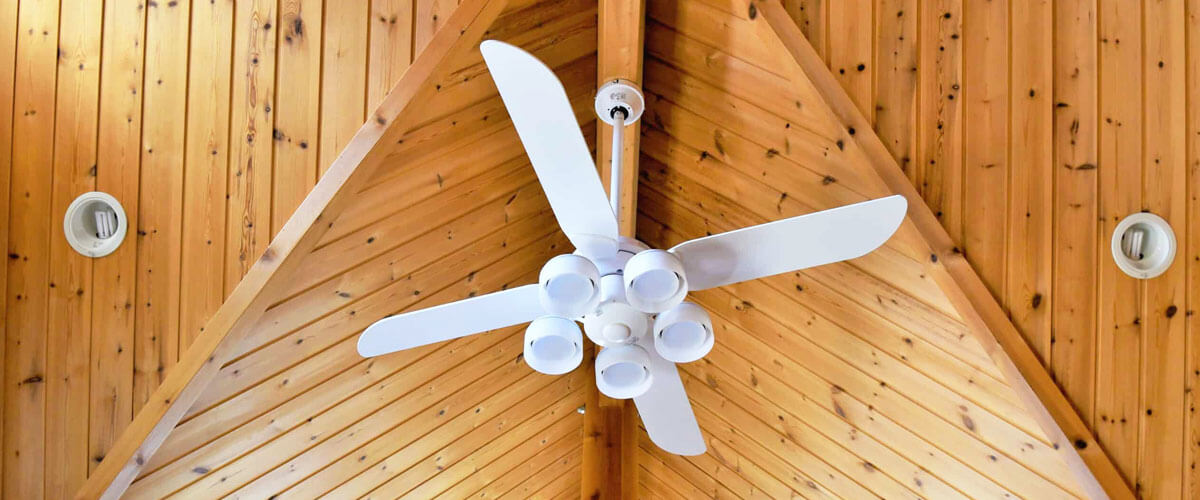
The standard power consumption of ceiling fans can vary depending on various factors, and I can provide you with a general range of power consumption for typical ceiling fans.
Overview of average wattage consumption by ceiling fans
Low speed: a standard 48-inch (122 cm) ceiling fan might consume around 15 to 30 watts of power. Smaller fans could consume even less energy.
Medium speed: the power consumption of a 48-inch fan could range from 30 to 50 watts.
High speed: result in power consumption ranging from 50 to 75 watts for a standard 48-inch fan.
Factors influencing variations in these averages
Ceiling fans with larger blade spans or more advanced features might consume slightly more power. Additionally, some ceiling fans come with energy-efficient motors and components designed to minimize power usage while maintaining effective cooling and airflow.
It’s important to note that using a ceiling fan in conjunction with an air conditioning system can potentially allow you to set your thermostat a bit higher and save on overall energy costs.
How to calculate the electricity consumption of a ceiling fan
You should start by checking ceiling fan wattage on the manufacturer’s label, which can often be found on the fan motor or in the user’s manual. This will give you the power rating, usually indicated in watts (W).
Basic formula for electricity consumption
To find out the current ceiling fan consumption, you need its power rating, as well as the amount of time it’s in operation: Electricity consumption (kWh)=Power (kW)xTime (h).
Daily consumption calculation
For example, let’s say you have a 1000-watt (1 kW) air conditioner that runs for 4 hours each day: Power (kW) = 1kW, Time (h) = 4h.
Electricity Consumption (kWh) = 1kW x 4h = 4kWh
So, the air conditioner’s daily electricity consumption is 4 kWh.
Monthly and annual consumption calculation
For example, you have a 60-watt (0.06 kW) device that is used for 5 hours each day: Power (kW) = 0.06kW, Time (h) = 5h.
Daily Consumption (kWh) = 0.06kW x 5h = 0.3kWh
Monthly Consumption (kWh) = 0.3kWh x 30days = 9kWh
Annual Consumption (kWh) = 9kWh x 365days = 3285kWh
Factors for a more accurate calculatior
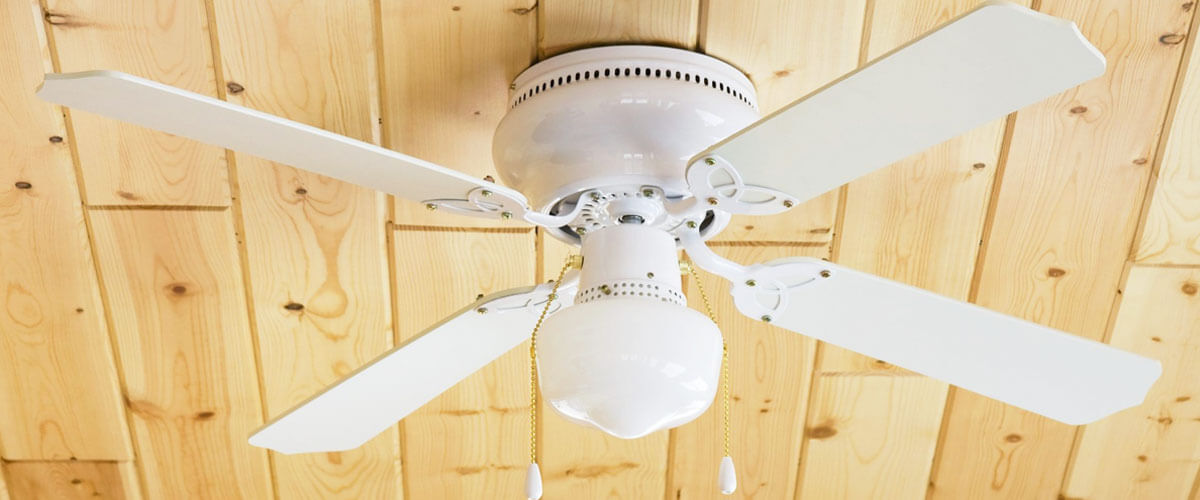
Calculating the power consumption of a ceiling fan with greater accuracy involves considering various factors that influence its energy usage.
Operating speeds: Ceiling fans typically have multiple speed settings, ranging from low to high. The power consumption varies with the speed setting used. Calculate the consumption separately for each speed if the fan operates at different speeds.
Integrated lights or features: Many modern ceiling fans come with additional components that consume extra power. If your fan has integrated lights, include their wattage in your calculation.
Real-world conditions: Fans might not always run at the maximum or minimum settings. Account for the average speed and usage time for a more realistic consumption estimate. In some regions, the usage of fans might be more prevalent during certain seasons. Adjust your calculations based on these seasonal variations. Older fans might experience efficiency losses, so include this aspect when calculating power consumption.
FAQ
Is it more energy-efficient to run the fan at a lower speed?
Yes, running a ceiling fan at a lower speed is generally more energy-efficient compared to running it at higher speeds. Slower speeds require less energy to move air more gently.
How does the power consumption of a ceiling fan compare to an air conditioner?
Ceiling fans are significantly more energy-efficient compared to air conditioners. Air conditioners use a compressor and refrigerant to cool air, which requires a substantial amount of energy.
Does the size of the fan affect its power consumption?
The size of the fan does affect its power consumption to some extent. Larger fans with bigger blade spans can potentially move more air, which might lead to higher power consumption. However, modern fan designs can moderate the impact of size on power usage.

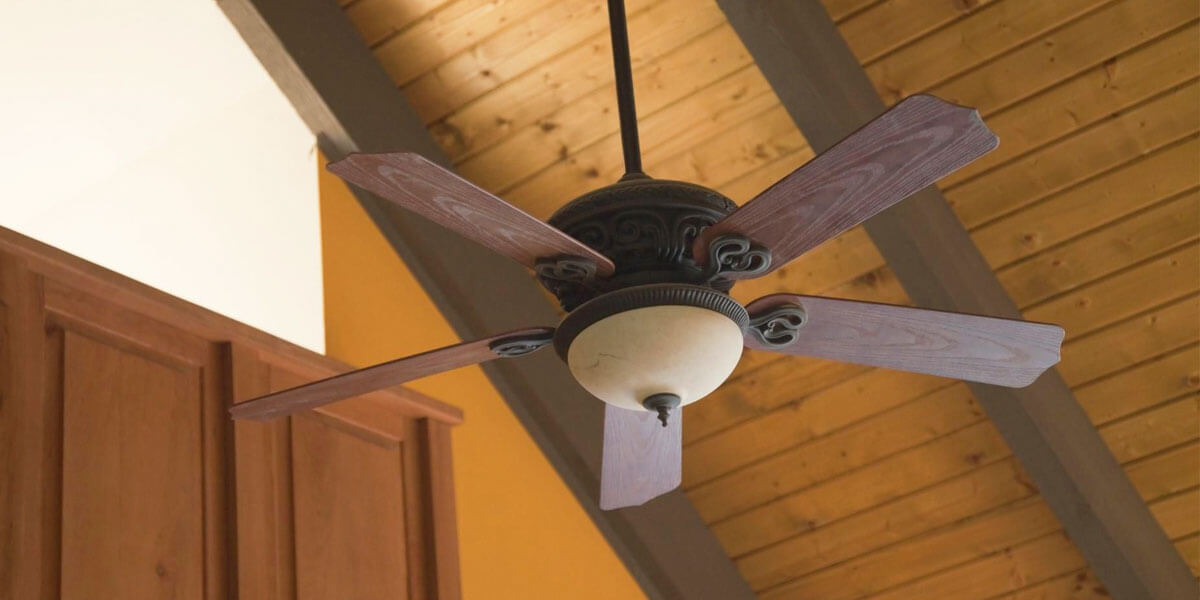
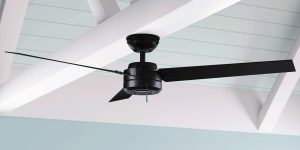
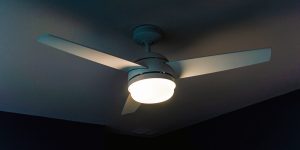

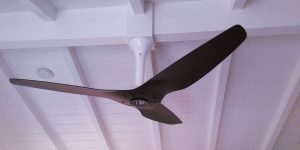
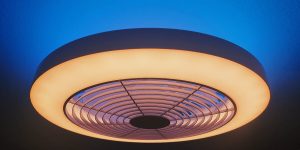


![How Many Blades Should a Ceiling Fan Have? [3 vs 4 vs 5-Blade]](https://www.kennedyproductions.com/wp-content/uploads/2023/08/does-the-number-of-blades-on-a-ceiling-fan-matter-300x150.jpg)
